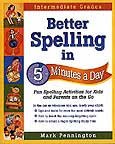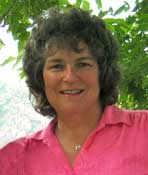Having homeschooled 7 children, I eventually figured out that either kids come as “natural spellers” or they don’t. And if they don’t, you have to teach them to spell.
The natural speller can see the word in their head. You might see them writing it with their finger in the air when they are figuring out the spelling of a word. Spelling comes pretty easily to this child.
The “has-to-be-taught” speller is just as intelligent. In fact, spelling doesn’t have much to do with intelligence. As soon as the “has-to-be-taught” speller gets some memory clues or rules to go by, they can spell just as well as anyone. Of my 7 children, a few of them are natural spellers.
For the natural spellers, it is pretty much a waste of time to give them spelling lists, spelling tests, workbooks, or spelling activities. They will get it eventually, no matter what you inflict upon them. They can see the word in their mind’s eye and the more times they see it, read it or write it, the easier it gets. For a natural speller, I have found the best exercise is to correct their daily journal writing, and help them analyze a misspelled word. Once it is pointed out, they can practice that word—write it a few times each day perhaps. A memory clue is big help, such as pointing out the word end in the word friend (a friend is a friend to the end). Once they can see the right spelling, they generally do great at self-correction in the future.
Here are a few spelling clues to get you thinking:
here, hear
hear–you hear with your ear. See the word ear in hear.
here and there are places. You can see here in there.
together
Separate the word into syllables: to-get-her
If you are going somewhere together, you have “to get her” first.
The main thing is to talk through the misspelled word with your child the first time you spot it. Just dissecting it is often enough to help a natural speller see and correct his mistake. When my son spelled rock as roc, I asked him to spell sock, clock, block, lock, etc. As he put the ck on the end of each word, he quickly recognized the pattern and fixed rock without another word from me.
For my “have-to-be-taught” kids, my favorite resource is Better Spelling in 5 Minutes a Day. This was a wonderful discovery in my homeschool, because my kids love to do it. It isn’t the usual dry-bones spelling rules with drill, drill, drill. Each section of this non-tortuous book briefly teaches you (the mom/teacher) how to present the spelling rule to your child, often with a little rhyming ditty, and then the rest of the section has games to practice with: mazes, word games and puzzles that reinforce the spelling rule. There is not even a spelling list! Or a test. Each lesson is a process of discovery in finding out which words follow the rule. It’s empowering! This book can be used from about age 9 and up, but even a teen will benefit and learn to spell better.
Good spelling is just about as important as brushed hair or a washed face. It is often the first impression we will make. In a day when email or texting is a common form of communication, spelling matters. Believe me, I have seen my share of misspelled job applications—and they are not very impressive. It’s worth it to teach our kids to spell!



Comments on this entry are closed.